7 Reasons We Don’t Need Guillermo del Toro’s At the Mountains of Madness
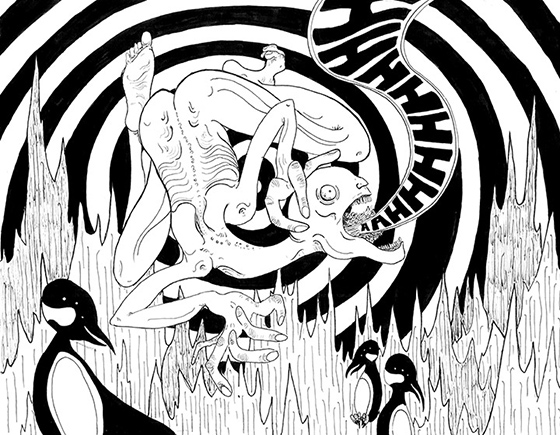 |
For years Guillermo del Toro has been a filmmaker who makes his loves and influences known. For ten of those years he has been carrying an adaptation of H.P. Lovecraft’s At the Mountains of Madness in his bag of tricks (which is kind of like Mary Poppins’ bag of tricks, except he just says what’s in the bag and leaves us to hope he’ll pull it out someday.) Lovecraft’s writing inspired some of the greatest horror writers and directors to come after it, and every day there are still more who find themselves enchanted by its legacy. Almost a hundred years after its publication, At the Mountains of Madness‘ language is dense but rich, old but well-aged. It is one of Lovecraft’s longer stories, though entirely digestible.
So how would the del Toro movie be? SPOILERS abound from here on…
One of the author’s most memorable quotes is “The oldest and strongest emotion of mankind is fear, and the oldest and strongest kind of fear is fear of the unknown.” In terms of fiction, this philosophy applies to every medium, whether written, illustrated, or on screen. Ridley Scott’s Alien used this approach masterfully. Then Prometheus came along, defined the “anti-prequel” category, and proved that while knowing is half the battle, trying to forget is the other half. Unfortunately Prometheus was one of the reasons At the Mountains of Madness was stalled, but we’ll get into that later. For now, the most recent noteworthy news about production is that while on stage at San Diego Comic Con this year, del Toro said he had execs listening and asked the crowd what they wanted to see next: Hellboy 3 or At the Mountains of Madness. Going by volume and enthusiasm, the crowd picked Hellboy 3. Nerds.
Adaptations are never going to make everybody happy, but I wanted to see if the del Toro script is really the champion many fans are clamoring for. After several reads, I posit the answer is “probably not.”
1. Cthulhu
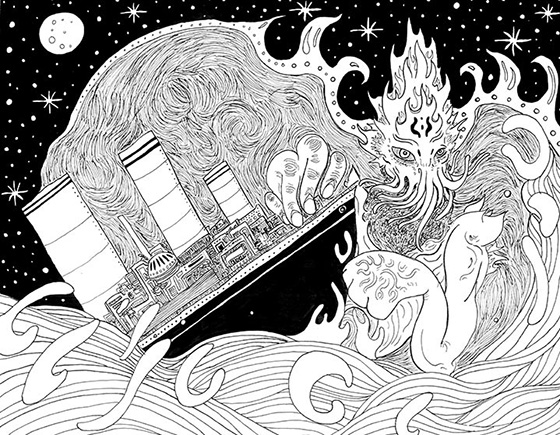 |
Let’s address the winged, tentacled elephant in the room. The script has every intention of showing Lovecraft fans the big boy himself: Cthulhu. Though he’s not technically in the short story (his cult is mentioned in passing), it’s understandable why this is a tempting addition to the film. He’s the Lovecraft mascot, after all. And even if this production were made and a success, it could very likely be the only time del Toro has the chance to bring the classic monster to screen. It’s a justifiable change to the source material, and could be a symbol of the triumph of the movie being made at all (if, of course, it ever is).
His scene? He rises out of the ground, throbbing with energy and described exactly as you would imagine. He tries to destroy the boat (but somehow fails, despite getting a solid grip on it) and the crew gets away…and that’s all you see of him. He gets less than half a page of script time. This scene alone would cost a fortune and, considering its scope, would be a crucial thing to execute well. But for so little screen time, it’s not hard to wonder if this bit of fan service would hurt more than help.
2. The Library Intro
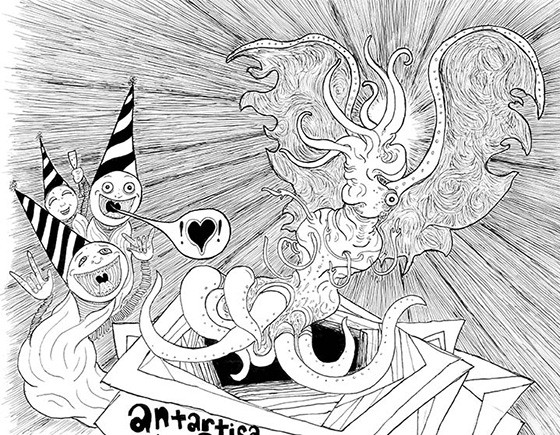 |
In the novella, the Elder Ones (celestial beings who created the Shoggoths and hold key answers to humanity’s origins) are revealed to the reader via an excited autopsy over the two-way radio from Lake’s character to Dyer and Danforth. The next day, when Lake doesn’t report back, the suspense is that much greater, because you know he was in the presence of something completely foreign and strange. But in the script, Lake convinces Dyer and Danforth to join him on this mission to the Mountains by showing him the Elder Thing that he had mailed to him. Let me repeat that. A crate. With an Elder Thing inside. Arrives at Lake’s house. And during a party, Lake takes Dyer and Danforth aside to show it to them. And it’s just sort of propped up.
This raises a variety of questions. What happens to this massive alien body while they are gone? Does it just continue to rot in the house? Why wouldn’t they just stay there and study the specimen, for at least a little bit, instead of leaving right away? Who was in charge of putting this creature in a crate and taking it to the post office to get postage from a place where no man exists?
Inducing several more head scratches is the fact that in context, it’s apparent why this change is happening: Lake has to have something to pry Dyer away from his pregnant wife. Oh yeah, there’s a love story.
3. The Love Story
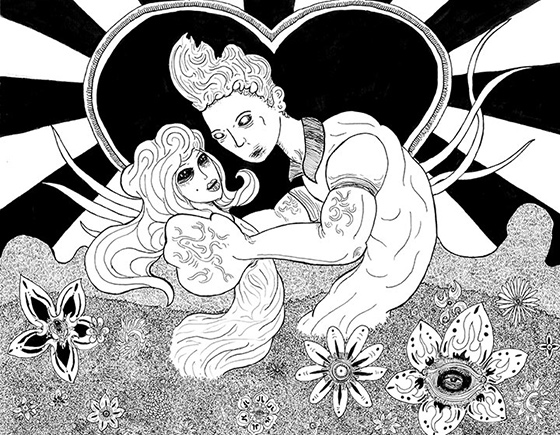 |
Granted, it’s not extremely elaborate, but merely added momentum in the form of a bait and switch. Dyer’s wife urges him to stay, and he insists that he will return to be the father he is destined to be, but right now he needs to be the explorer he wants to be. Their relationship is reminiscent of the scene in Bram Stoker’s Dracula where Keanu Reeves and Winona Ryder narrate their letters back and forth. The distance doesn’t seem so bad when you’re in THAT much love.
Here’s where it gets messy. Twenty-two pages in, Dyer gets a letter, but it is intercepted by Lake. It states that his wife and child died during childbirth, and Lake keeps this news from Dyer until much later – when the madness has already ramped up. So the wife is introduced, killed off screen, shown in Dyer’s dreams as sad and dreary imagery, and then revealed dead when the character needs more motivation to go on. If this sounds like a writing device added for convenience and not a character, your ears are probably well-tuned. This script invents several lead characters. Why not make one of them female?
4. God Complex
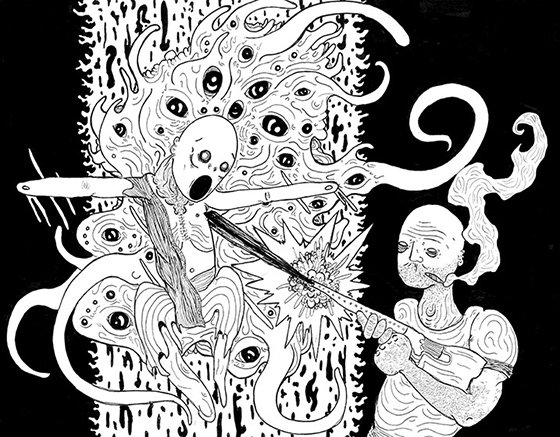 |
I find it appropriate to quote the script at length here, just to convey exactly what we’re dealing with.
Atwood enters the ship’s chapel and puts down his shotgun. Below the large wooden cross, he quietly crosses himself. Behind the altar, he breaks through a sheet of ice and opens drawers and cabinets. At last he finds what he’s looking for: a bible. As he turns to leave, he sees something briefly reflected in the cracked glass of the cabinet. He spins around to witness a glistening shape resolve into the form of a man, standing in the doorway. It’s Lake. He gazes balefully at Atwood.
Atwood: How did you?
The Lake-thing laughs, a wet, horrible noise.
Lake: Not Lake. (I’m going to skip ahead, after Atwood panics and breaks into the Lord’s Prayer.) …Lake is here, with us. He wants you to know that it was them – The Old Ones, who brought life to this planet, not your God! (More praying from Atwood) They created life many times, on many worlds! First, out of hunger. Then, out of boredom they created men! Yes! They made you: a house pet! And gave you doubts and fears and hopes and faith. It made you more entertaining to watch – like a puppy dog chasing its tail.
Tentacles envelop Atwood in a smothering embrace.
Lake: Go on, little man. Finish your prayer. You know that no one is listening.
And then the Lake-Shoggoth wraps more tentacles around Atwood, transforms his face into Atwood, Atwood grabs the shotgun, and evil Atwood’s face bares a mean set of teeth before lunging.
Doesn’t this seem ridiculously UN-Lovecraft? This is indeed the story of the Old Ones, but I can’t think of a more extreme opposite means of execution. I know it’s a movie for a modern audience, but even with all its tentacles this scene drops the ball for me. These few sentences contain a huge chunk of information from the novella, and when you have the whole thing laid out in front of you like that without the carefully timed reveals, it cheapens it.
There are thousands of people more dedicated to Lovecraft then me, and he has maybe a hundred works that I admit I will probably never read. But even from my outskirts of fandom, I feel the spirit of the source material is but a ghost in this scene.
5. The Dark Man
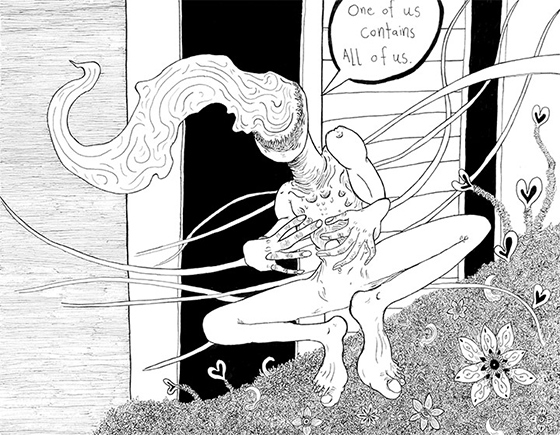 |
The Hobbit Trilogy has introduced a larger audience to Azog the Pale Orc, even though according to Tolkien lore he died over a century before the events of The Hobbit. In a similar fashion, a villain character has been added to At the Mountains of Madness, except this one is made up entirely (as far as I can tell, this creature has no relation to Lovecraft’s other character “The Black Man”). Coincidentally, in contrast to the Pale Orc, this one is called the Dark Man.
One could argue the Dark Man is actually an avatar for the classic Lovecraft psychology of letting the imagination of the audience be the engine that drives the fear and intrigue: “I knew somehow that whatever horror lurked under that hood…if I saw it….would drive me mad!” And then we see a “barely visible boiling mass of flesh. A screaming void.” Later we learn the secret. The Dark Man is actually the legion of Shoggoths “for one of us can contain all.” Isn’t there enough menace and conflict from the story without adding another made up villain/concept? The Shoggoths are used pretty liberally, as you’ll see in the scene below. It’s so deliciously over the top, you might even say it’s salty.
6. Shoggoth Attack
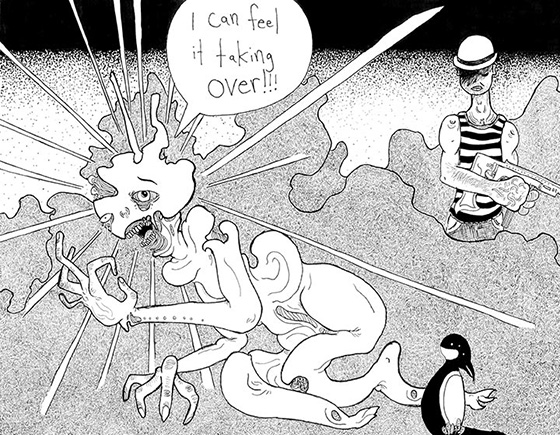 |
As you’ve already seen, the shape-shifting Shoggoths don’t only assume the form of subway-like masses (one of the few scenes that remains relatively untouched is the subway hallucination scene), but humans as well. We’re told in the book that these creatures can take whatever form they please, and the script has them as humans for a lot of the time. When an alien who can take any shape pretends to be human among humans, The Thing (and the story it was based on Who Goes There?) comes to mind, as well as several other stories. We also get some chemistry, similar to the blood test in The Thing, though this one much is more aggressive and uses salt. After Larsen sees a Shoggoth melt in the salt water of the ocean, he gets the idea to fill his shotgun bullets with salt. “Goes good on the beef, too.” Classic.
Later, the script goes full throttle with a transformation scene that doesn’t make much sense but fits in with the kind of movie this script (intentionally) sets out to be. Shoggoth ooze makes Danforth start to…transform into some kind of mutant? What? How does that – nevermind. We don’t have time to think about it because we are hit right away with:
“Shoot me! Shoot me now!”
“I can’t!”
“Please, I beg you! I can feel it taking over… let me choose how I die.”
And then the gun goes “bang,” followed by the obligatory tearful apology and then right back into the action.
Now, let’s talk about Prometheus.
7. Prometheus May Have The Upper Hand
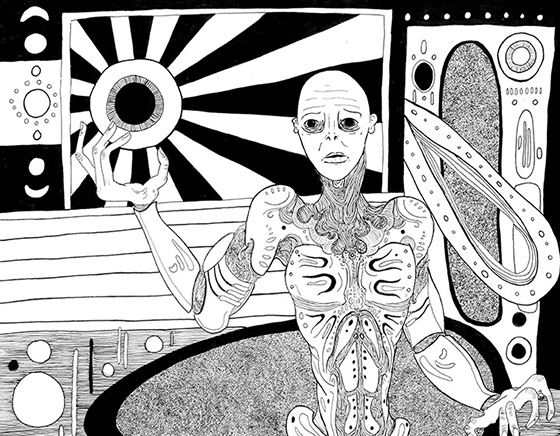 |
There are of course the obvious parallels found in the broad strokes: Humans in a foreign setting, looking for the origins of life, finding monsters, realizing they’re screwed and worthless, etc. etc. It’s not exactly a plot we’ve seen a hundred times, but it should be recognizable enough to feel at least a little tired. But the script (written before Prometheus) also inches closer to familiar territory by having two scenes that play out almost identically.
Keep in mind, the Lovecraft story takes place in the 1930s – hardly the time or place to see technology rivaling Prometheus, but nonetheless, there is a scene where the humans find a blue glowing orb that projects holograms around the dark cavern that begin to answer the bigger questions. What a random thing to have in common, especially in a movie set in the ’30s. What are the odds this film would have a strange blue orb project exposition around the room in a scene that feels high tech even in a movie set far, far in the future? Maybe I’m just looking too closely here, but the next bit falls right in line with Prometheus as well.
Remember the storms that happen on LV-223? The ones that come exactly when the script needs them to and offer no real purpose except for adding another layer of confusion? There is that scene that happens as soon as David opens the cannister to get the goo, and the storm hits. Everything goes crazy, and the humans scramble while trying to grab every piece of evidence before being forced to run for their lives. Well, there’s one in Mountains, too. As soon as the orb projects and the characters become hypnotized by all the new knowledge, a storm hits and sends different groups scrambling in different directions.
It’s just an unfortunate case of coincidence, but I can’t help but picture del Toro watching Prometheus and seeing several of his Lovecraft visions portrayed in that film. It’s like when two bands have the same song on the same bill.
I’m not trying to be pessimistic for snark’s sake – I really wanted to like this script. And it wasn’t a boring read by any means. In fact, del Toro would likely direct the hell out of it. But before writing this article, I had read At the Mountains of Madness once, as a teenager, and heard Lovecraft’s name regularly synonymized with “legacy” “inspiration” and “pioneer.” It wasn’t until diving into At the Mountains of Madness as well as a few other stories (like Dagon) that I found Lovecraft’s writing to be bigger than the monsters he creates. The delivery and execution in his plots are so carefully woven that even through his early century English his skill is evident. When it comes to a film version of this particular story, fans deserve another Alien, and we’d probably get Prometheus.
My gut feeling is that this story should be left alone. Films and books are different, and if translating means too drastic of a change, what’s the point? I invite yays or nays: am I alone in hoping del Toro will maybe pick up that Justice League Dark project again, or even stick with Hellboy 3? As we’ve brought up here before, Hollywood is currently giving nerds as much love as we’ve ever seen. Why not let the love keep coming, and leave well enough alone with one the true classics of horror?
Thanks to Matthew Steele for his always splendid artwork.
Also by Bryce Abood:
6 Ways Donkey Konga Out-rocks Guitar Hero
7 Great Moments From the Deadpool Movie Script
8 Insane Things From the Never-Made Oliver Stone/Arnold Schwarzenegger Planet of the Apes
9 Memorable Things About Max Landis’ 436-Page Super Mario World Script
